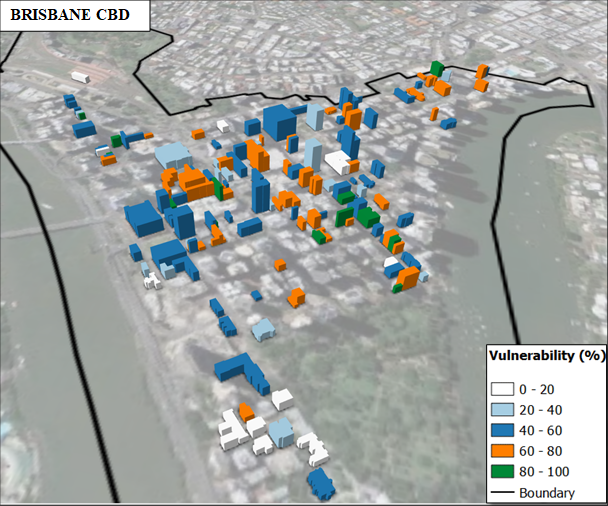Many heritage buildings in Queensland towns and cities have characteristic details that can make them susceptible to earthquakes, a survey of pre-1945 unreinforced masonry buildings by QUT civil engineers has found.
- Queensland’s old unreinforced masonry buildings surveyed for risk of damage by earthquake
- Study identified types of building construction and assessed their seismic vulnerability and fragility
- Data collected is available for risk assessment for multi-hazard cyclones, floods and storms.
Many heritage buildings in Queensland towns and cities have characteristic details that can make them susceptible to earthquakes, according to a survey of pre-1945 unreinforced masonry buildings by QUT civil engineers.
PhD researcher Nouman Khattak, under the supervision of Dr and Professor , from the QUT , are on the quest to make our communities safer from earthquakes by identifying potentially vulnerable buildings.
“While major earthquakes happen every 10 years on average across Australia, the infrequency of significant earthquakes near the Queensland towns may have contributed to a perceived low seismic risk,” Dr Derakhshan said.
 Mr Khattak said vintage unreinforced masonry (URM) buildings were mainly public and commercial buildings in the centres of towns and cities.
Mr Khattak said vintage unreinforced masonry (URM) buildings were mainly public and commercial buildings in the centres of towns and cities.
“Many of them hold local and state-level heritage status,” said Mr Khattak, who undertook extensive fieldwork for his PhD research funded under the Australian Research Council project, ‘Seismic evaluation of non-structural unreinforced masonry components’.
“Many are situated in the State’s high seismic zones as defined by the Queensland Fire and Emergency Services’ State Earthquake Risk Assessment 2019: “Specifically, the areas of highest risk from significant earthquake occurrence and impact are those areas of Zone 003 which include Gladstone in the north, extending south to incorporate the Greater Brisbane area and Ipswich, and west to include areas bordering the Great Dividing Range”.
“Our research is focused on identifying the prevalent typologies of these buildings and assessing their seismic vulnerability and fragility,” Professor Thambiratnam said.
Using a prepared checklist, Mr Khattak documented on foot the various features of individual URM buildings in seven localities including Ipswich city, Toowoomba, Bundaberg, Gympie, Warwick, Maryborough and Childers.
“This checklist included aspects of the buildings that influence their seismic (earthquake) response, including the all-important geometries of their facades, which we obtained with a simple laser measurement device,” he said.
“Other checklist items were roof type, number of storeys, and construction year. We paid particular attention to construction details such as parapets and other masonry appendages such as chimneys.
“The data we collected has been recorded for the wider research community and could be used for risk assessment including that for multi-hazard cyclones, floods and storms.
“Many buildings were found to have elaborate street-front facades connected to a pitched roof. This type of façade is susceptible to separation from the roof and collapse into the street but is also well interconnected to the side walls.”
Mr Khattak’s supervisor, Dr Hossein Derakhshan, said validated numerical models were required to study the restraint from the interconnection and predict the façade’s collapse potential while avoiding over-conservatism.
“Dynamic tests conducted overseas on similar building types were used to calibrate a numerical model,” Dr Derakhshan said.
Mr Khattak said that in collaboration with Dr Daniele Malomo from McGill University, Canada, the team adopted a European test building and calibrated a computer program capable of modelling the interconnected wall response.
“This study sets the foundation for future endeavours aimed at ensuring the safety of Queenslanders in the face of future earthquakes,” Mr Khattak said.
This study is to be continued with fragility and vulnerability assessments of Queensland URM buildings.
in the Journal of Building Engineering.
(Main image, from left: Professor David Thambiratnam, Nouman Khattak, Dr Hossein Derakhshan)








